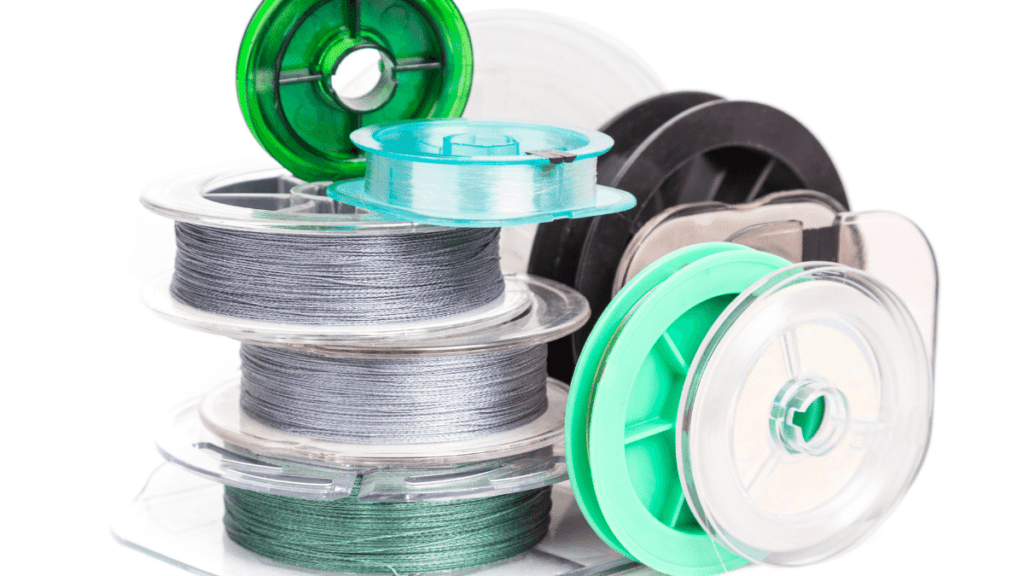
Fishing lines are some of the most useful threads out there! Of course, they are perfectly strong, thin, and flexible, making them ideal for angling, but they are also commonly used in crafts.
Be it for making necklaces, bracelets, earrings, and more, you can get some serious use out of a good piece of fishing line! But, do you know how to tie a knot in a fishing line for crafts?
If you’re new to making a monofilament knot, it’s as simple as grabbing a pair of pliers and keeping things extra-tight. Below, I’ll take you through how you can knot up a fishing line for a whole host of different craft ideas.
Tying a strong, long-lasting, fool-proof knot in a fishing line isn’t as difficult as you might think!
Here’s my go-to guide to follow if you’re interested in using tough, strong lines for hanging decorations and more besides.
How to tie a slipknot in a fishing line – step by step
The best kind of knot to use in a fishing line is the slipknot. It is a strong knot commonly used by fishermen to hold all kinds of fish on the line – even the heaviest of beasts! The best part about this knot is that it is also very easy to perform. It doesn’t require any particular skill or fancy tools – just a simple pair of pliers and your own hands will do just the trick!
Step one – get the right pliers
A good set of needle nose pliers is the first thing you will need to tie your knot. Make sure that they are strong and robust enough to handle fishing lines. Given that monofilament is so thin, it can easily slip through certain pliers. Shop around for a reliable pair – it’s worth it!
Step two – get bending
Now, start by bending the fishing line right where you want the knot to be. Then, fold the line until it forms a loop between your thumb and finger. Hold the loop tightly to push the line at the loop’s apex. This will ensure that the knot will form in that specific part of the line. It will also make it harder for the knot to untangle or slide!
Step three – tying up
Now, you can tie the knot in the line. Slide the knot while it is still loose up to the bent point on the line. Once it has reached the perfect position, pull the line as tightly as possible until the knot is fully wrapped around.
Step four – pull tight!
Take the pliers and pull the line even more to make the knot as tight as possible. Take the line by its ends – if you have two pairs of pliers to hand, use one set at each end to tug the line as hard as possible. You can also simply grip the line with the pliers at one end and use your finger at the other.
Once you’ve done one side, switch the pliers to the other side, and grab the other with your fingers, then repeat the process until it’s completely tight. You will know it is tight enough once you let go and the knot does not begin to loosen itself.
You can repeat the process on different parts of the line should you wish for there to be multiple knots along the line.
Step five – finishing up
Once you have finished, simply cut the ends of the fishing line with some scissors to remove any dented or damaged bits that the pliers may have caused. Voila – your fishing line should be nicely knotted and ready to go!
Why use fishing line for crafts?
Fishing line is very popular with many crafters simply because it’s amazingly strong and resolute when pulled taut. That makes it ideal for hanging certain crafts from and creating lovely banners for any occasion. Tying up a tough line is going to need more than a nimble pair of fingers, of course, so be sure to grab those pliers and start pulling.
I’ve often used fishing line to help hang seasonal decorations around my home, such as for Halloween, Thanksgiving and Christmas. If you’re crafting with the kids this holiday season, I’d strongly recommend you take care of the fishing line knotting yourself, mainly because there’s some pretty sharp equipment required!
Conclusion
Tying a slipknot in a fishing line is easier than it looks. All you need is a simple pair of pliers that’s tough enough for the task. I highly recommend fishing line if you’re looking for something considerably less flimsy than your average string or rope!
Give my techniques above a try and see what you can make with fishing line your way!
Originally posted 2022-11-01 16:11:47.
